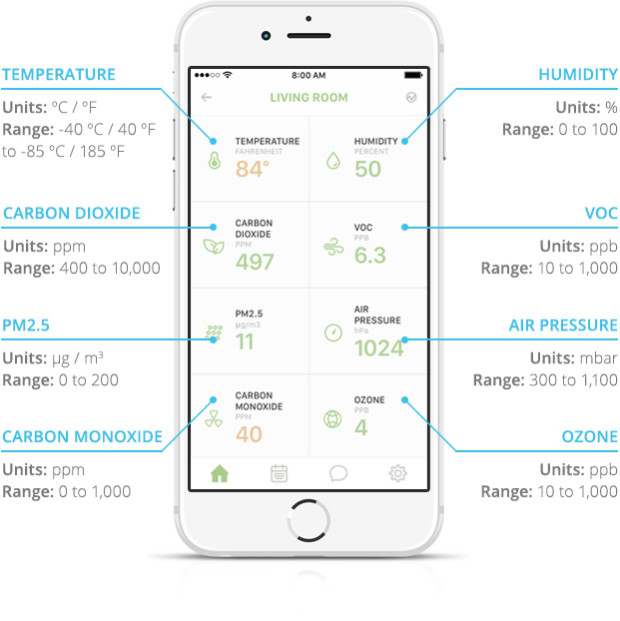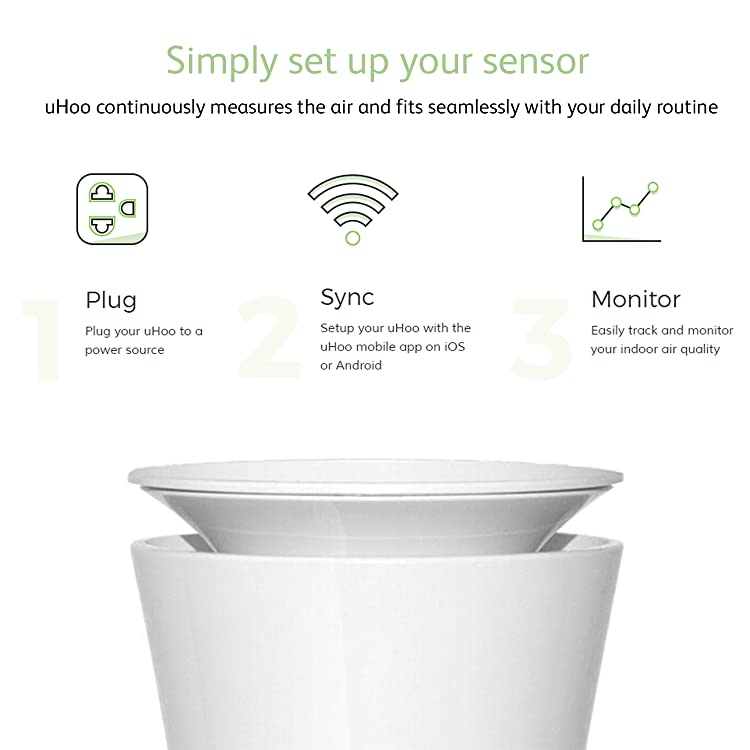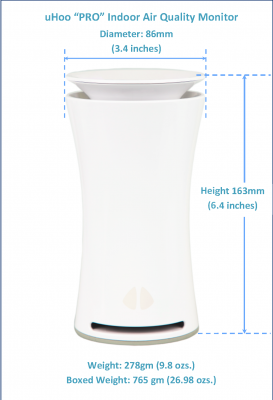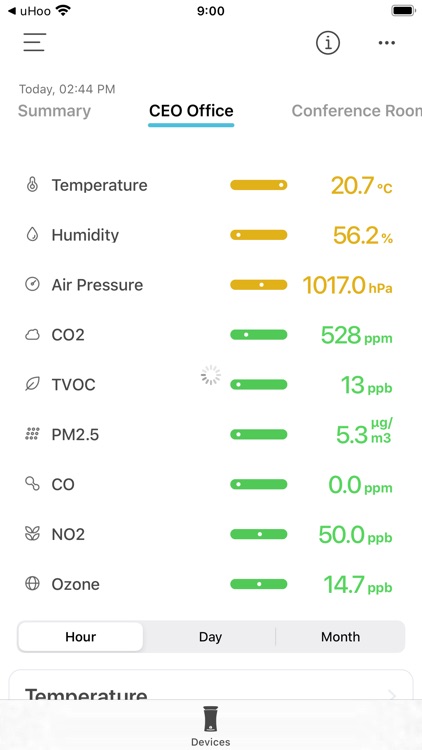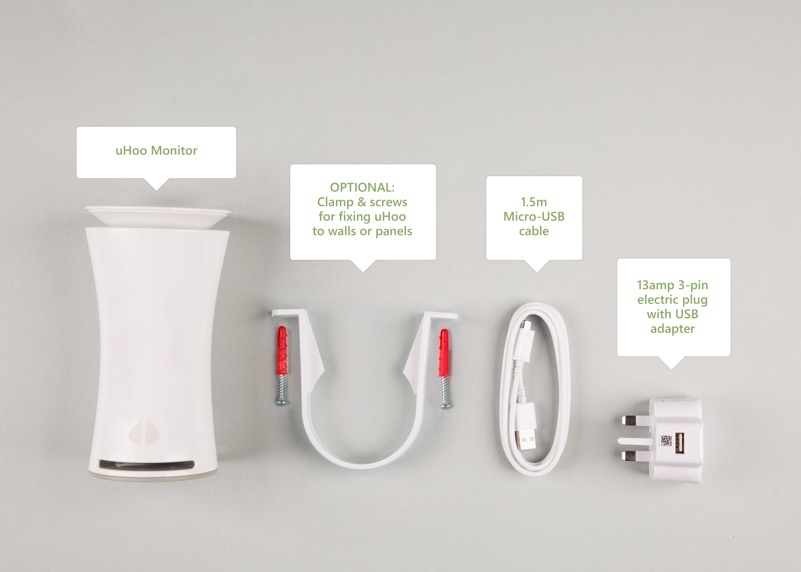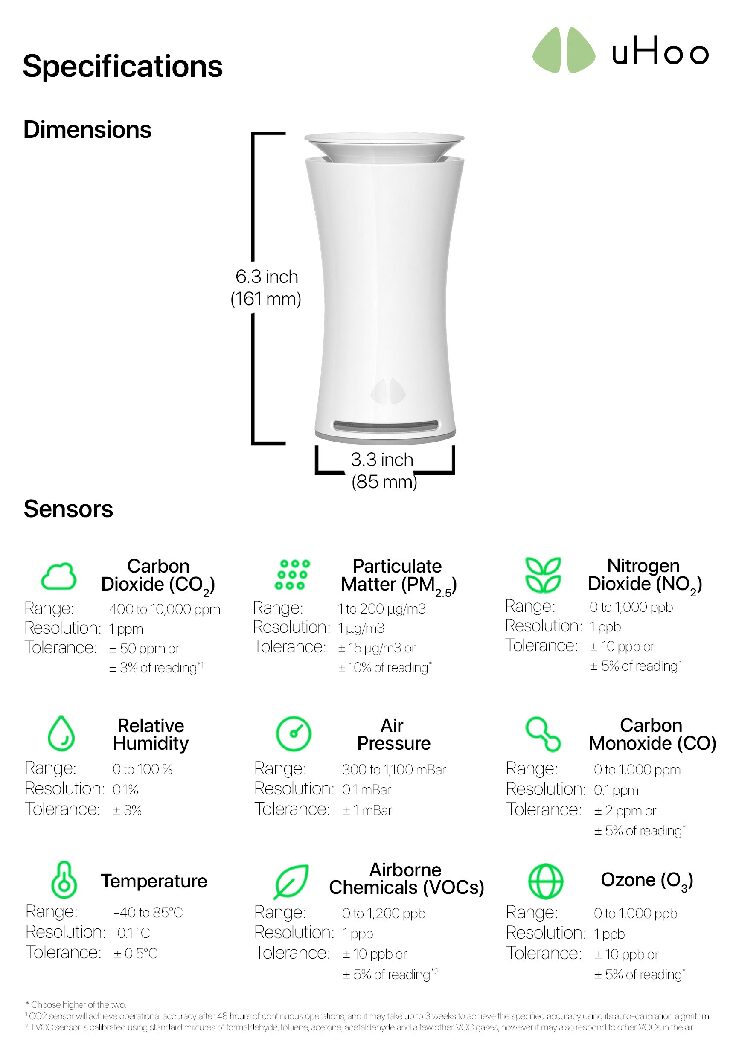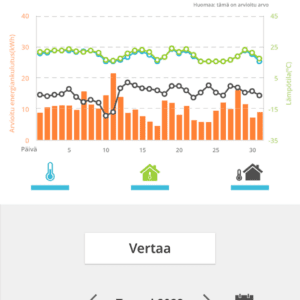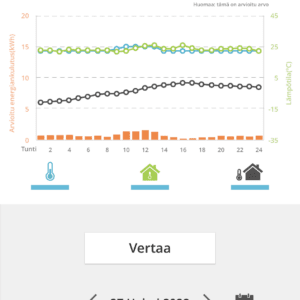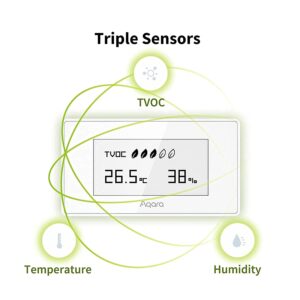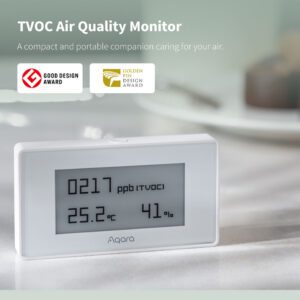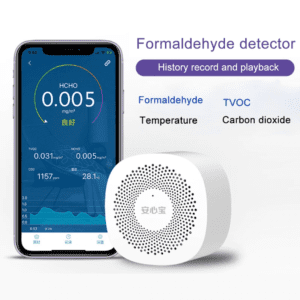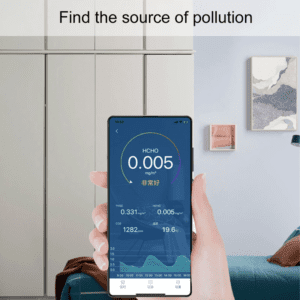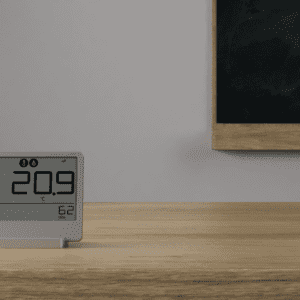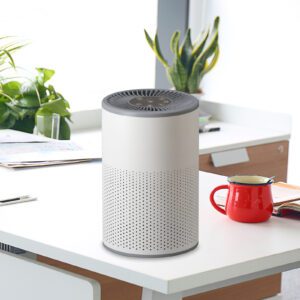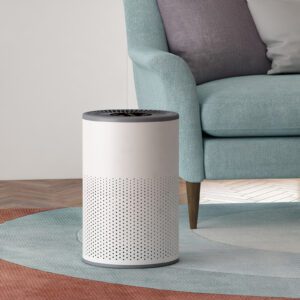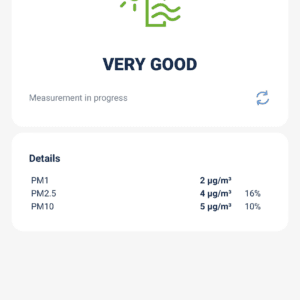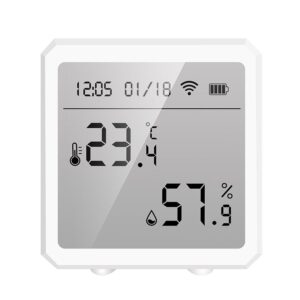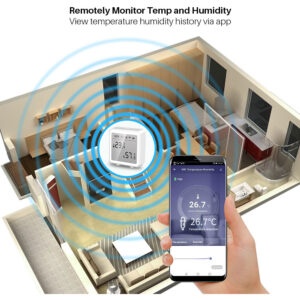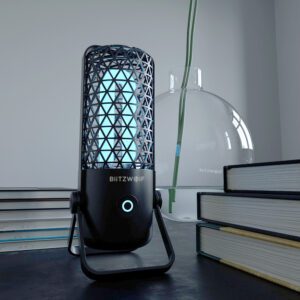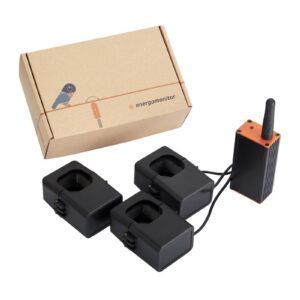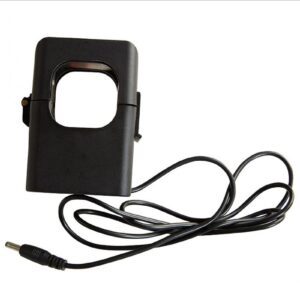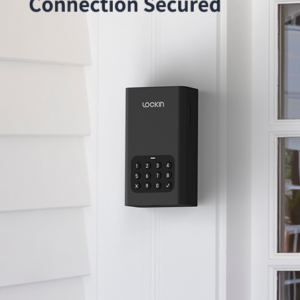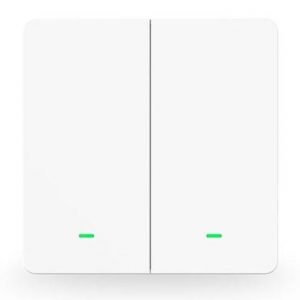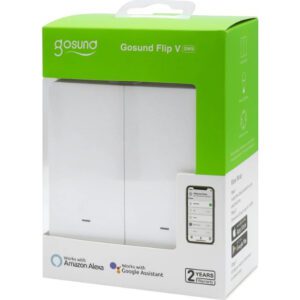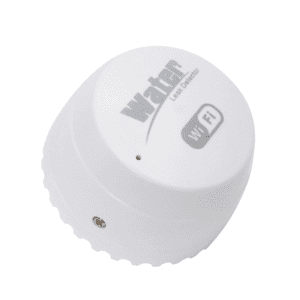WiFi Ilmanlaatumittari 9-In-1 uHoo Air
Etäluettava uHoo Air WiFi ilmanlaatumittari 9-In-1 sopii kohteen ilmanlaadun etäseurantaan. Mittari liitetään WiFi verkkoon ja se mittaa reaaliajassa 9 eri ilmanlaatuun liittyvää parametriä. Ilmainen sovellus toimii Apple iOS ja Google Android App toimii kännyköissä ja tablet koneissa.
WiFi ilmanlaatumittarin mittaussuureet – Mittausalue / Resoluutio / Tarkkuus
- Lämpötila -40°C ~ +85°C / 0,1°C / ± 0,5°C
- Ilmankosteus 0 ~ 100 %RH / 0,1 %RH / ± 3 %RH
- Ilmanpaine 300 ~ 1100 mBar / 0,1 mBar / ± 1 mBar
- Häkä Carbon Monoxide CO 0 ~ 1000 ppm / 0,1 ppm / ± 2 ppm tai ± 5% lukemasta
- Hiilidioksidi CO2 400 ~ 10.000 ppm / 1 ppm / ± 50 ppm tai ± 3% lukemasta
- Otsoni O3 0 ~ 1000 ppb / 1 ppb / ± 10 ppb tai ± 5% lukemasta
- Nitrogen Dioxide NO2 0 ~ 1000 ppb / 1 ppb / ± 10 ppb tai ± 5% lukemasta
- Airborne Chemicals VOCs 0 ~ 1200 ppb / 1 ppb / ± 10 ppb tai ± 5% lukemasta
- Particulate Matter PM2.5 0 ~ 200 µg/m3 / 1 µg/m3 / ± 15 µg/m3 tai ± 10% lukemasta
WiFi Ilmanlaatumittari – Tekniset tiedot
- Käyttölämpötila 0°C ~ +40°C ja ilmankosteus 5 ~ 95 %RH
- Virrankulutus 900 ~ 1500 mW
- Radio Protocol WiFi 802.11 b/g/n
- Security 128-bit AES
- Range Up to 50 m outdoors and up to 30 m indoors
- Paino 270g
- Mitat K 161 x O 85 mm
Haihtuvat orgaaniset yhdisteet (VOC), ovat ilmassa kulkeutuvia kaasumaisia tai höyrymäisiä orgaanisia aineita. Monet pesuaineet, liuottimet, maalit, lakat, liimat ja muut synteettisesti valmistetut aineet voivat tuottaa VOC-yhdisteitä.
Sisätiloissa on useita eri VOC-lähteitä, esim. lattiapinnoitteet, värit, lakat, eristeet ja liimat, huonekalut ja matot. Yleensä sisäilman haihtuvien orgaanisten yhdisteiden pitoisuudet ovat alhaiset ja niillä on pieni riski ihmisten terveydelle tai turvallisuudelle. Pitkäaikainen tai liiallinen altistuminen VOC-yhdisteille voi kuitenkin aiheuttaa haitallisia terveysvaikutuksia, kuten päänsärkyä, huimausta, väsymystä ja pahoinvointia.
Lue tarkat tekniset tiedot uHoo Air laitevalmistajan ilmalaatumittarin esitteestä. Kysy OmaVahdin asiakaspalvelusta demojärjestelmien käyttäjätunnus. Se avulla voit tutustua järjestelmään heti oman tietokoneen selaimella.
Kannattaa tutustua artikkeliin ”The 7 Best Air Quality Monitor Review in 2020” on September 19, 2020 by Reviews of Air Purifiers.
Lue lisää aiheesta – Indoor Air Quality in Your Home: How to Test and Improve Indoor Air Quality
Carbon Dioxide CO2
A high level of carbon dioxide gas causes breathing difficulty with the displacement of oxygen in the air. Below 1000 ppm is a safe level for CO2 in indoor air.
Carbon Monoxide CO
Carbon Monoxide is a tasteless, colorless, and odorless lethal gas. CO can be emitted from various burning sources. Smoke is the primary source of CO, CO2, plus other harmful gases, including PM2.5. The maximum CO level of 9ppm is considered as safe for indoor air.
Volatile Organic Compounds VOC
Volatile Organic Compounds (VOCs) is the most common pollutant for indoor air. Various daily consumer products such as cleaners, adhesives, sprays, paints are the sources of VOCs.
Formaldehyde HCHO
Formaldehyde is a chemical that can be emitted from building materials and daily household products. A high concentration of Formaldehyde in indoor air can cause various health problems.
Ozone O3
Ground level Ozone is a lung irritant. A high concentration or long-term exposure to Ozone can cause lungs and other potential health problems. O3 is emitted from some kinds of air-cleaning devices.
Temperature °C
It is suggested to keep the room temperature around (+23°C ) in summer for comfortable and also energy savings for air conditioning devices. Always put the room temperature in your comfort zone.
Humidity %RH
Humidity should be kept at 30 ~ 50 %RH. A high level of moisture in the inside air can grow air pollutants like mold and dust mites. There are multiple ways you can manage your indoor air clean.


